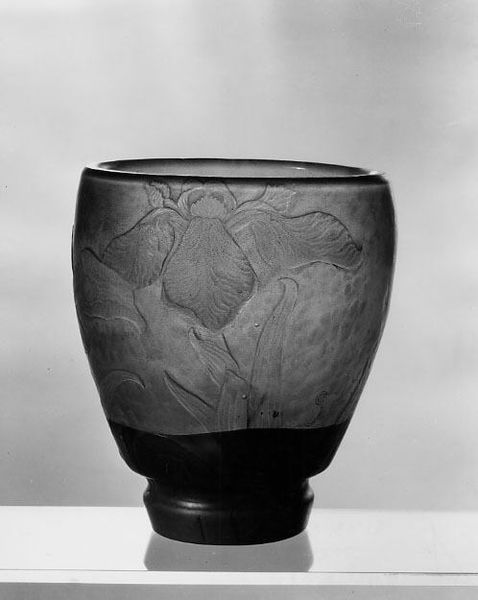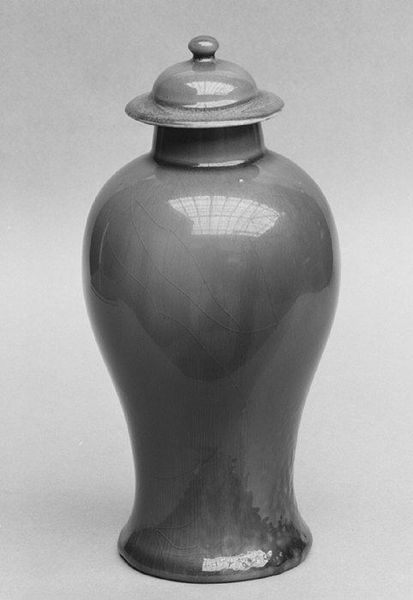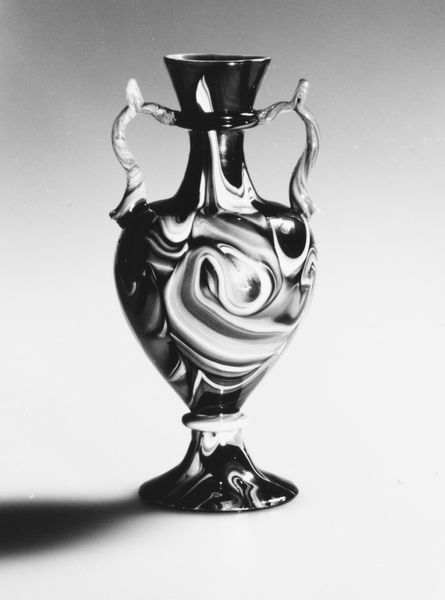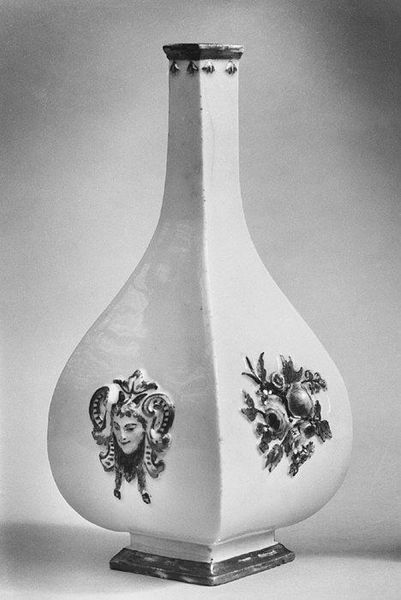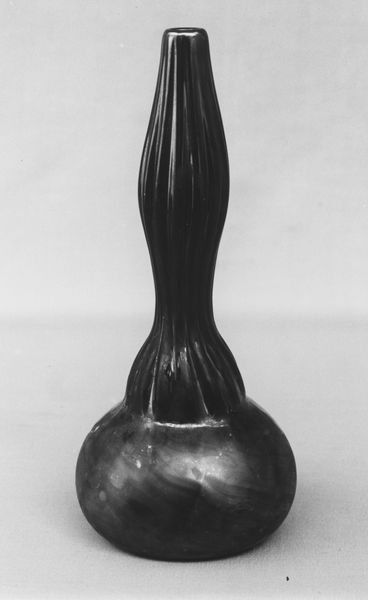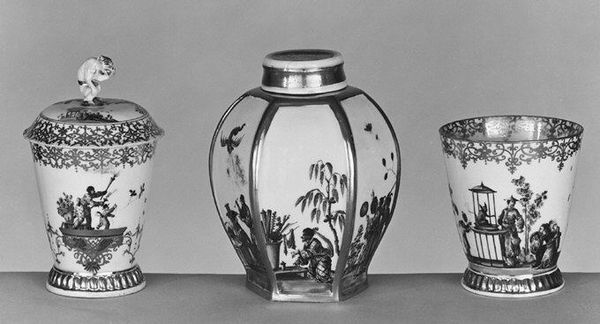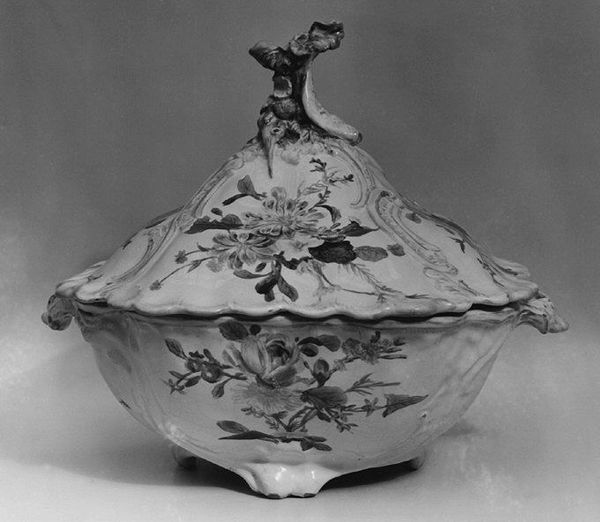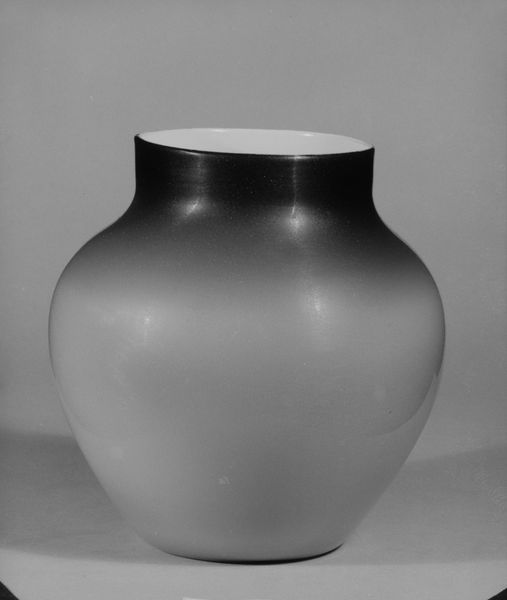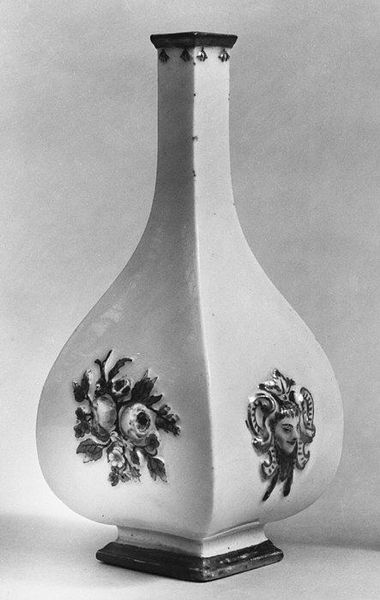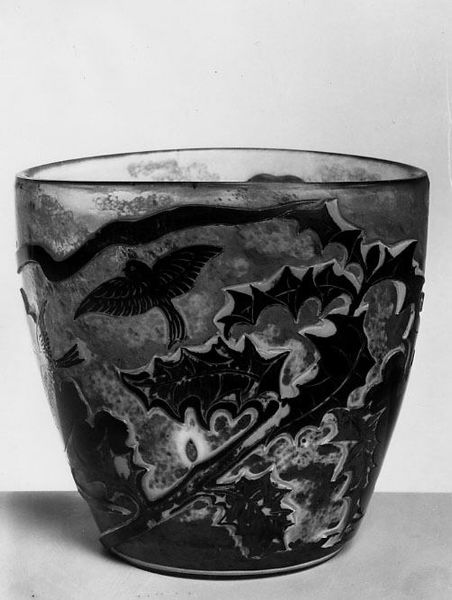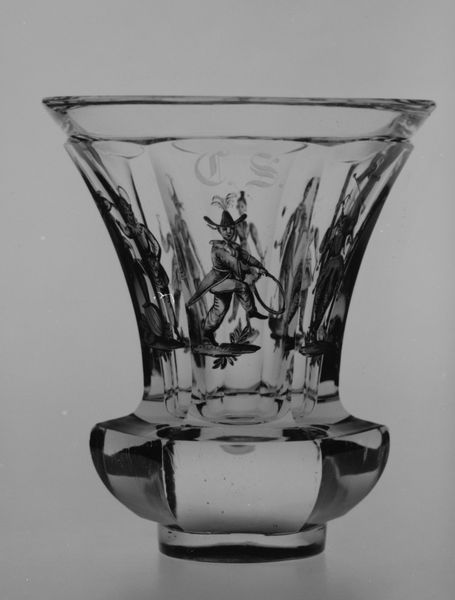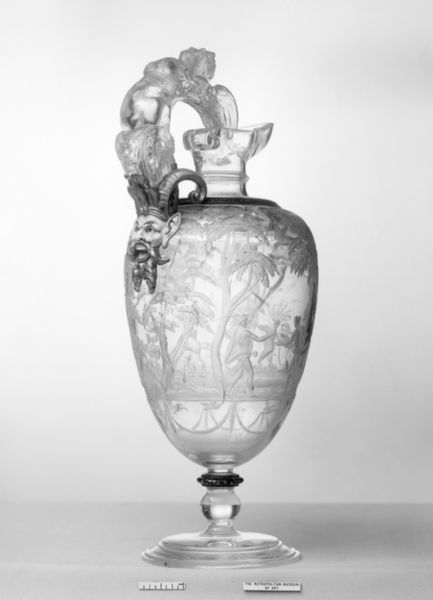
Dimensions: H. 11-5/8 in. (29.5 cm.)
Copyright: Public Domain
Editor: Here we have a glass vase by Émile Gallé, made sometime between 1885 and 1895. The monochrome palette gives it such a pensive, almost dreamlike quality. What strikes you when you look at this, professor? Curator: The tulips are potent symbols here. Think of the "Tulip Mania" of the 17th century—where these flowers represented wealth and status but ultimately fleeting beauty, so to speak. What does it mean when these symbols become almost ghostly, captured in glass like this? Is it longing? Nostalgia? Editor: That’s a great question! I hadn’t considered that the fragility of glass might emphasize the fleeting nature of the flower's symbolism. Curator: Consider also how Art Nouveau, the style, rebelled against industrialization by embracing natural forms. Tulips connect to ideas of growth and renewal. Do you see any visual contradictions in pairing an organic motif with such an obviously manufactured form? Editor: Now that you point it out, yes. It feels like it’s trying to bring the outside in but filtered through a specific lens. The smooth, cool glass contrasts the soft forms of the painted flora. Curator: Perhaps it signifies controlling nature? Or maybe memorializing it during times of immense changes due to urban development. Consider that decorative arts at this time became a cultural artifact. Editor: So, it's almost as if it's not just about beauty, but it captures bigger anxieties and changing perspectives through these images? Curator: Precisely! We should consider an artist’s world and our world too as it lives on and changes meanings. It’s so interesting how art remains an enduring visual echo! Editor: Definitely! This really opened my eyes to layers of symbolism. I appreciate this vase so much more!
Comments
No comments
Be the first to comment and join the conversation on the ultimate creative platform.
